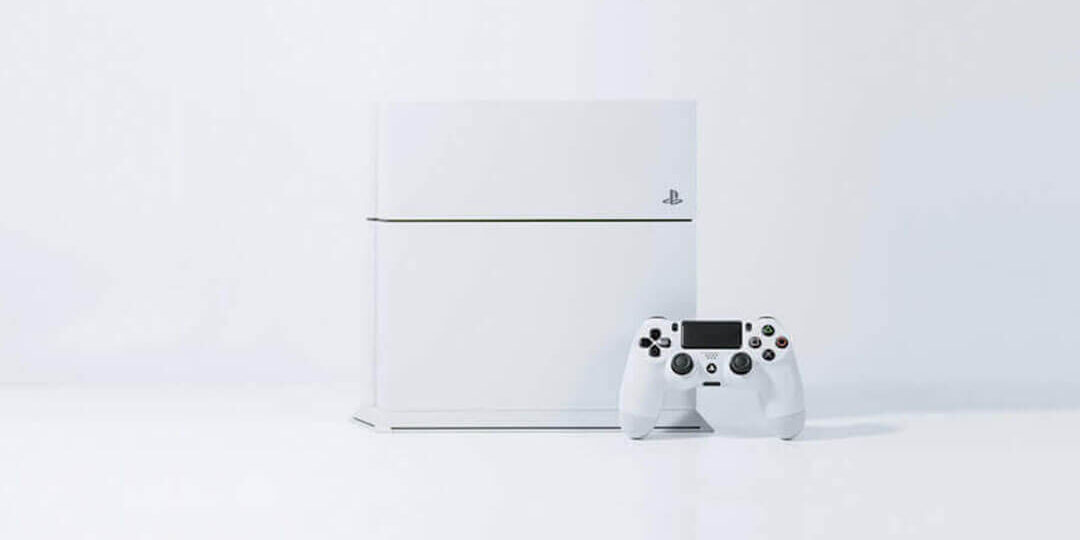Cash is king, but in a socially distant world where payment is as easy as. Does cash still hold the same value? Cash is still relevant, but cash is no longer king, although people in this country and around the world do continue to use cash to purchase things every day, that is decreasing. Electronic payments have cannibalized checks. Card payments have grown, but cash remains king.
Two thirds of transactions under ten dollars are done in cash. Although data surrounding COVID’s impact on cash has yet to be reported, the pandemic is expected to cause a drastic decline in cash usage due to the risk of contamination. The unprecedented surge in the demand for contactless payment has also shown outstanding performances from major companies offering cashless payment methods like Apple, Square, and PayPal. You’re seeing digital payments in this crisis move from being a nice-to-have capability to a must-have essential service. Whether it is credit or debit or prepaid cards or peer to peer services like PayPal or Venmo or others, we’re seeing a corresponding increase in digital transactions as we’re seeing a decrease in the use of cash.
So could Covid signal the end of cash in the United States? And can the U.S. really function without physical currency? Nearly a third of U.
S. adults say they make no purchases using cash during a typical week. The share of people who say that all or almost all of their weekly purchases are made by cash dropped from 24 percent in 2015 to 18 percent in 2018. In 2019, the Federal Reserve found that most cashless methods of transactions, including debit cards and mobile payments, increased in the past two years compared to cash and check payments, which showed a decrease in the same time period. I never carry around cash.
So I use Apple Pay at the Bodegas, for example, when I’m getting groceries, for most of my purchases. I don’t use that necessarily for like electricity bills, for dinner bills. That’s when I would use Venmo or Cash app. Despite the rise in electronic methods of payment, experts say that cash isn’t a force to be reckoned with. There is a false narrative that Americans are using cash less now than ever before.
In point of fact, cash in circulation continues to grow strongly. What you’ve seen happen are electronic forms of payment, taking other electronic forms of payment or checks out of the system. Cash transactions are still dominant. Cash is the second most used form of payment in America today after debit cards. Millennials are the ones leading the charge toward a cashless future.
A report from Experian in 2019 revealed that one in 10 millennials use their digital wallet for every purchase, especially on food, rent and ride shares. Pew Research also found that about 34 percent of adults under the age of 50 make no purchases in a typical week using cash, compared with 23 percent of those ages 50 and older. I’m an older millennial, so my friends who are not millennials tend to carry that cash around versus my younger friends who tend to use more of the apps. And even if they did carry cash, I’ve seen less of that these days as people start to use Cash app, Venmo, Splitwise. It just makes everything easy.
As digital natives grow up and become consumers in their own right and engage in commerce, they’re very comfortable with not only digital means of engaging generally, but particularly comfortable with engaging in commerce digitally.
Many businesses around the U.S. have also been adapting to the higher demand for cashless transactions. Major companies like Amazon, Wal-Mart, Starbucks and Sweetgreen have experimented with cashless stores in past years.
Part of the reason big companies are going cashless is to get out of paying expensive swipe fees. Let’s take Starbucks, for example, whose app was the most used online form of payment for years bigger than Apple Pay for many years. A lot of people mistakenly think the Starbucks app is about building loyalty or getting flow or interest. Starbucks has over a billion dollars sitting in their app. Yeah that float on your fifty dollars is nice, but it’s a few pennies or tenths thereof.
It pales in comparison to their savings on swipe fee. These companies are looking for alternatives to getting out of the swipe fee carousel and they’re experimenting with their own digital payment system or building their own ecosystem and wallets to try and encourage customers to pay using a different mechanism.
The COVID pandemic has also played a major role in the decrease of cash usage, as bank notes propose a potential hygiene issue when handled. In June, the Federal Reserve reported that the central bank was experiencing a coin shortage after the pandemic effectively stopped the flow of physical currency. I definitely don’t like using cash because of the germs aspect and not that I was using cash that much before, but I find that during COVID especially, I just don’t want to use cash as much for this reason.
People found that they didn’t want to touch cash and exchange cash. And so over the past six to eight months, we’ve seen the use of cash decline even further. And so I think we’re at a tipping point in e-commerce. I think we’ve accelerated where we were going to be maybe three to five years and in months have jumped ahead. And I don’t think there’s any turning back from that.
Cash and electronic payments both come with their own unique advantages and disadvantages. The advantage of electronic payments lies mostly in their convenience. They’re simple, they’re efficient, they’re safe, they’re secure. Cash can be risky in terms of accepting it, keep holding on to it safely and then getting it to a bank. A large part of business loss involves cash.
I find that Apple Pay is just so easy for me or Venmo or these apps just help me track my payments a lot easier rather than that extra step of signing in online into my bank account and then tracking it that way. However, some lawmakers that support a ban on cashless business say the practice is a form of discrimination toward those who don’t have a bank account or line of credit. If you’re one of the 40 percent or more of American families who are living paycheck to paycheck, it’s not so easy to just leave a little bit of money in this app and a little bit of money in that app and a little on this card, a little on that.

So cash provides flexibility that a lot of these other electronic cards don’t. In addition, cash is relatively free, right?
People say, oh, you know, people just apply to credit cards. Well, the majority of Americans have subprime credit ratings. Their prime credit cards are expensive. Debit cards? Yes, they offer access to your bank account.
Go over the limit? Thirty five dollars in overdraft. That’s extremely expensive. And that’s a cost borne only by people who are running out of money at the end of the month waiting for their next paycheck. The Pew Research Center found that lower income Americans are about four times as likely as higher income Americans to say they make all or almost all of their purchases using cash.
Transitioning to a cashless world would also mean that 25 percent of households in the U.S. who are either under banked or unbanked might not get access to the goods they need. There is a significant correlation between use of cash, prepaid debit, high end credit and wealth, and there’s a huge correlation between wealth and race. This is where I’m of two minds when it comes to going cashless because the social justice part of me says, hey, we should be carrying cash because it is discriminating against a lot of lower income folks or lower socioeconomic folks and just also those small business owners who are in need of that cash and even using credit cards was already a problem because it gets charged and they get less of that.
17 percent of African-American and 14 percent of Hispanic households reported having no bank accounts, compared to three percent of white households, according to the FDIC. Adding insult to injury, our tax code gives tax breaks to the wealthy who get their credit card rebates in cold, hard cash. 2 percent cash back at the register? That’s untaxed. Some lawmakers also see cashless establishments as a violation of the US Civil Rights Act that entitles everyone to the full and equal enjoyment of goods and services without discrimination on the grounds of race, color, religion or national origin.
And because our payment system is geared towards helping the wealthy and charging the poor, there is a significant racial correlation in all of this and it deeply exacerbates the wealth inequality and racial wealth gap that permeates America. In 2017, Visa, the world’s largest processor of credit and debit cards, declared a ‘war on cash’ paying businesses to help them convert to a cashless payment model. Several major companies like Shake Shack, Sweetgreen and Amazon Go made announcements to or experimented with going cashless soon.
However, they reverted their decisions after a public outcry, accusing them of discrimination. Stores that have gone cashless have come back, in part because it’s not fair.
Wealthy people. It’s fine if I put 50 bucks on my Starbucks app and just over time spend a little bit of it. But if I’m working paycheck to paycheck, if I’m one of the majority of Americans who don’t have a prime credit score, it becomes more and more expensive for me to turn my physical money into digital money.
As of twenty twenty, there is no federal law that requires a business to accept cash in exchange for goods and services. However, some states and cities have begun passing laws that ban cashless stores in order to ensure everyone can have fair access to goods and services.
And that’s a goal our industry shares, and it’s a goal our industry is working to advance, not through legal mandates of this type, but instead through developing those products and services that allow people, you know, to engage with cash across the breadth of commerce and again, including e-commerce, which is an increasingly important channel.
In 2020, Senator Bob Menendez and Kevin Kramer introduced a bipartisan bill named the Payment Choice Act that, if passed, would effectively ban all cashless stores throughout the United States. Yet despite all of this, new technologies have been popping up to make digital payments easier and more efficient for those with access. I think you’re going to see digital payments in what we call omni-channels, which basically means you’re going to see it in the real world, in store through contactless payments as well as in line.
You’re going to see a lot more people ordering online and maybe picking up in-store and either flashing a QR code or tapping their phone.
The rise in popularity of cryptocurrencies could also play a major role in the transition to a cashless future, according to some experts. There is a lot of exploration right now of digital currencies, including central bank digital currencies, which would essentially be a dollar, but a digital dollar that’s issued by the Federal Reserve in the same way physical dollars are now. And I know one of the things that the Federal Reserve is working to determine is whether there are attributes of a digital dollar that would make it profitable in some way or they’re additive in some way to the system that we have. Other countries have already tried to make the switch. There are countries including Finland, Sweden, Canada, the U.
K., all that are making that move a little more quickly. China has announced a big push for a digital RMB. And so, again, the push to move away from cash towards a more digital future.
However, experts from both sides agree that the United States is still far away from going entirely cashless.
The world is not cashless and is not going to be in the very near future. I do think the pandemic has accelerated that trend away from cash in a pretty significant way, and I think that accelerated trend will endure. I do not think we should have a cashless society, nor do I think Americans want one. The demand for cash is very high. The amount of money in circulation continues to grow.
This is as true at one dollar and five-dollar notes as it is at twenties and hundreds.
FREE TRAFFIC SUPER PACK Is Live!…
Discover more from Making Money Is Easy
Subscribe to get the latest posts sent to your email.











![[Explore 20241104] Colors of autumn [Explore 20241104] Colors of autumn](https://i0.wp.com/live.staticflickr.com/65535/54116799494_01eed0bc05_m.jpg?w=640&ssl=1)























